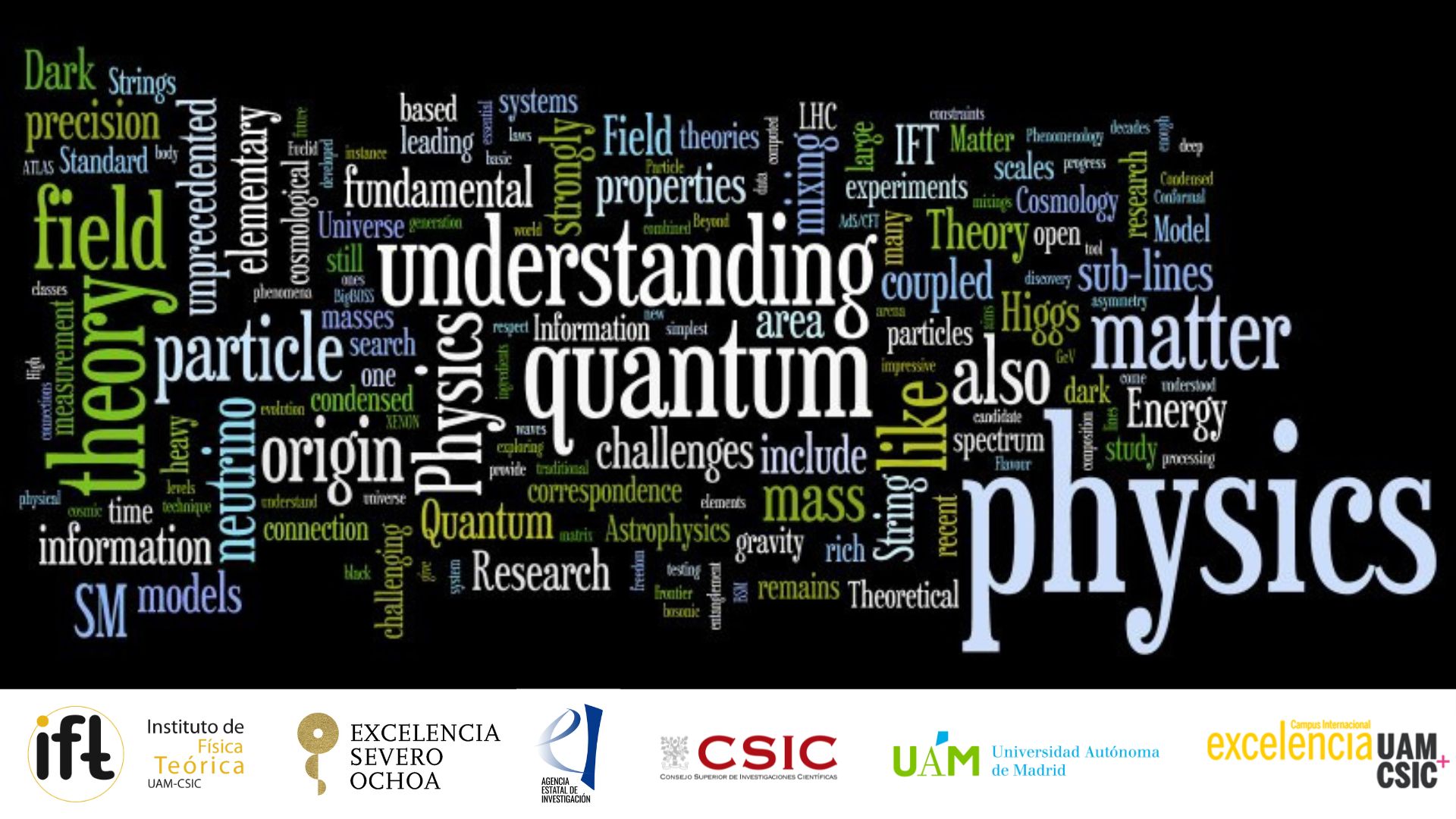Centro de Excelencia Severo Ochoa
Menú
Buscar

IFT Seminar Room/Red Room
The fundamental constants of Nature play a crucial role in our understanding of the Universe. They represent the limits of our current knowledge of the laws of Physics but at the same time encode new phenomena yet to be discovered. In recent years, an enormous observational effort has been devoted to study the variation in space and time of some of these fundamental constants.
This thesis is divided into an observational analysis and a theoretical study. First, we present an observational constraint for the cosmological variation of the fine structure constant using emission lines present in quasar spectra upto redshift z=1. From the Sloan Digital Sky Survey Quasar Catalog (Data Release 12), we build a sample of 13,175 quasar spectra showing the [OIII] doublet (4960 A, 5008 A) and apply the emission line method to impose limits on its variation in redshift over the last 7.9 Gyr at the 10^-4 level. Several sources of systematics are analyzed including sky contamination and line blendings.
In the second part, we explore a theoretical mechanism producing expectations values of scalar fields to depend on the gravitational potential. To have varying expectation values is one of the usual ways to accommodate variation of fundamental constants. We develop a formalism that enables us to compute the complete 1-loop quantum corrections to the effective potential and energy momentum tensor of scalar fields arising in the presence of gravity. This formalism provides the local part, usually obtained with the well-known Schwinger-de Witt expansion, but also the non-local contributions.
Social media